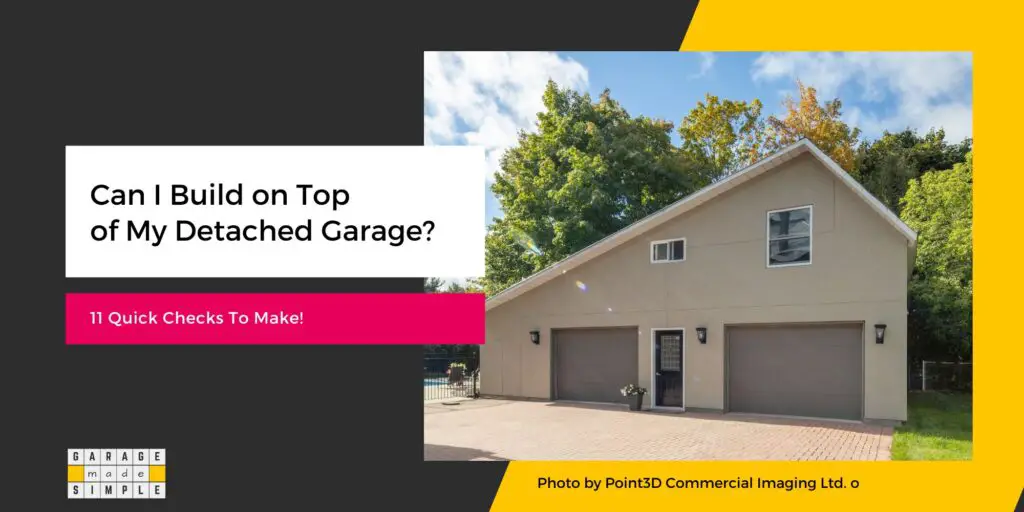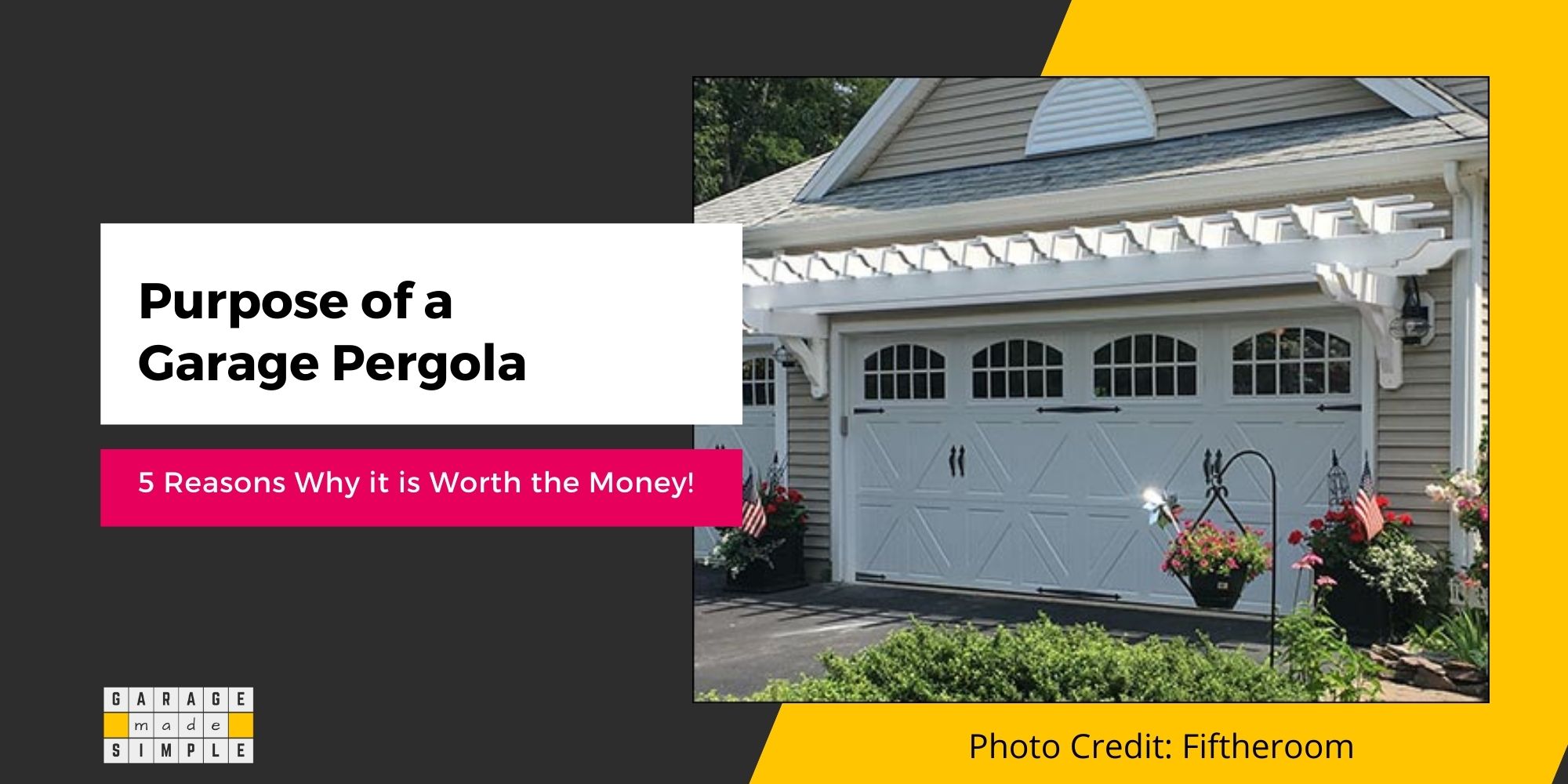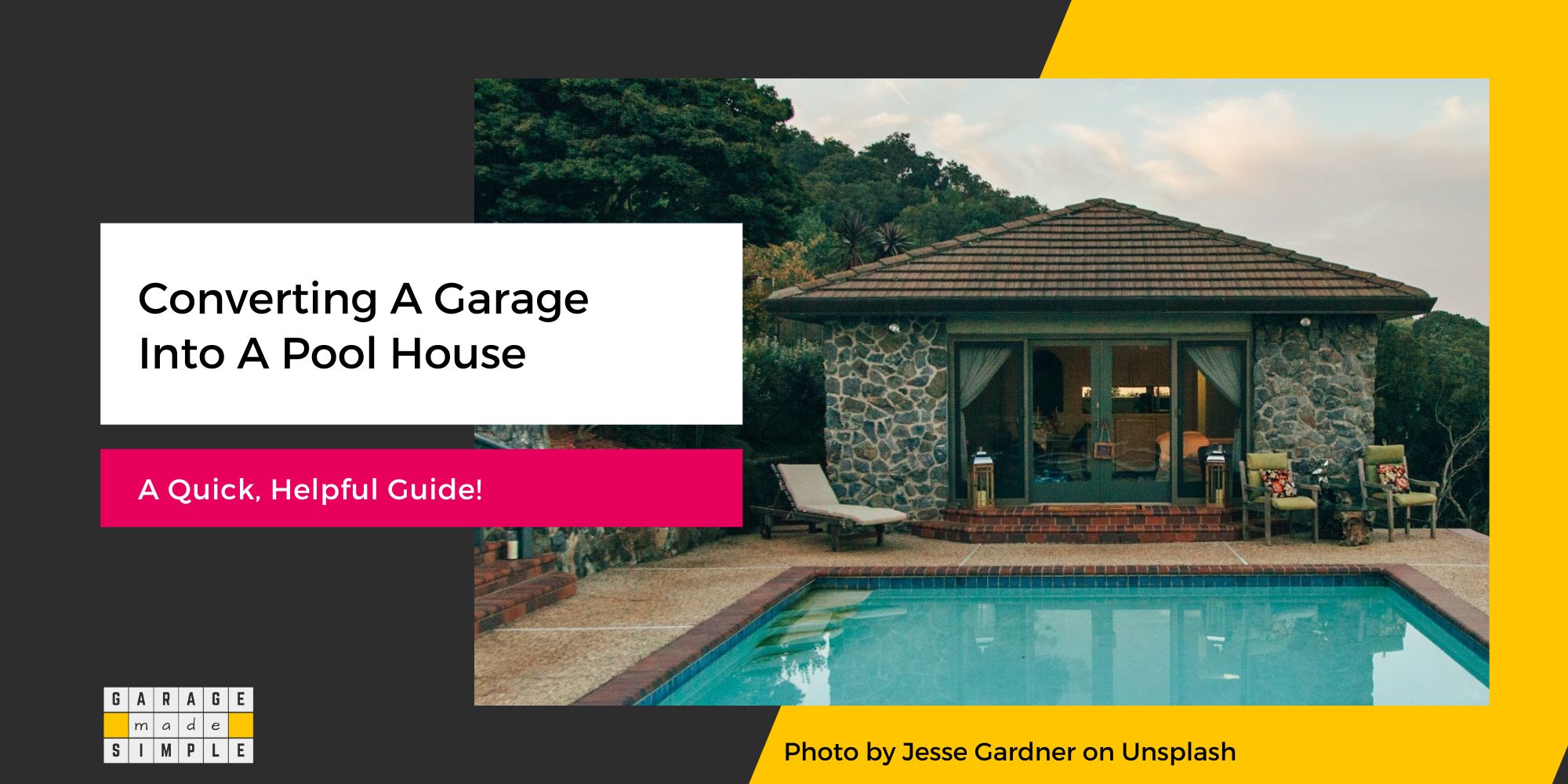Can I Build on Top of My Detached Garage? 11 Quick Checks To Make!
garagemadesimple.com is a participant in the Amazon Services LLC Associates Program, an affiliate advertising program designed to provide a means for sites to earn advertising fees by advertising and linking to Amazon.com . The website is also an affiliate of a few other brands.
Can I Build on Top of My Detached Garage?
Do you need additional living space? The question that you need to ask is, Can I build on top of my detached garage?
You may consider building living quarters on top of your detached garage. It’s a great thought but can it be done? Can you build on top of your detached garage?
You can build on top of your detached garage but you must make these 11 quick checks first.
- Foundation Strength
- Zoning Law
- Building Permit
- Code Compliance
- Subpanel Capacity
- Plumbing & Drainage
- Experienced Contractor
- Project Duration
- Cost Implications
- Impact on Curb Appeal
- Home Value
Embark on your project only if you can check most of the boxes.

1. Foundation Strength
The structural stability of any building depends on the foundation. The foundation transmits the entire building load to the ground, uniformly & safely, and minimizes any stress on the structural components due to soil movement or shifts in the load pattern.
When you build on top of your detached garage, it puts an additional load on the garage foundation. Now, was the foundation of your detached garage designed & constructed to bear this additional load?
Quite often a detached garage is constructed on a slab-on-grade foundation. A typical slab-on-grade garage foundation consists of a 4” thick concrete slab on a 4” thick compacted gravel base.
Such a concrete slab-on-grade foundation is strong and stable enough to bear the load of a single story garage, that is the weight of the garage walls, garage roof, garage door, parked cars and general storage & light workshop.
However, it is not strong enough to bear the additional load of a second story. To be able to bear the load of a second story, a slab-on-grade garage foundation must have a 6” – 8” thick concrete slab, reinforced with steel rebars and having thickened reinforced edges.
The edges, which could be 12” or more thick, can bear the load of the second story transmitted down through the walls.
It is possible that your detached garage may have a different type of foundation such as a T-shaped Stem Wall foundation or a Pier & Beam foundation.
If you are not sure of the load bearing capabilities of the garage foundation then you must engage the services of a certified structural engineer to evaluate. Based on their evaluation you can make a decision on “ go or no-go”.
2. Zoning Law
Your plan to build on top of your detached garage must be within the rules & regulations of the zoning law applicable to your area. Zoning laws are enacted & enforced by local bodies, not statewide or nationwide bodies. Zoning laws determine how you can or can not use your property.
Specific rules & regulations can also be set by your HOA (Homeowner’s Association). However, these rules & regulations can not supersede the ones set in the zoning laws applicable to your home location.
Zoning code in residential areas may put restrictions on building height, building size, distance between buildings, safety requirements, waste disposal, etc.
3. Building Permit
Almost all construction and remodeling projects require a building permit. So you must apply & get a building permit from the local building authorities before you can commence on your project.
Every local building authority has complete jurisdiction on issuing a building permit and will require you to submit detailed drawings and plans. The requirements for getting a building permit may differ from authority to authority.
The process of getting a building permit to build on top of a detached garage can be quite overwhelming to say the least. Engaging the services of a local contractor with long experience in dealing with the local building authorities will be invaluable.
4. Code Compliance
Even though every local building authority has its own rules & regulations, it must follow the International Residential Code (IRC) in principle. The local building authority code is usually exactly the same as the International Residential Code (IRC) or an even stricter version of it.
Section 309 of the 2021 International Residential Code (IRC) has a few subsections that are applicable to garages that are considered attached to “A Dwelling Unit” (ADU). This includes living quarters that you build on top of a detached garage.
IRC stipulates use of fire-resistant material for
- Connecting Doors (R309.1)
- Walls & Ceilings (R309.2)
- Ducts (R309.1.1)
- Floors (R309.3)
You will be required to modify the existing detached garage so that it complies with the above codes. For example the garage ceiling may need to be changed to comply with the IRC code.
5. Subpanel Capacity
Typically a detached garage is powered from the main panel in the house. A cable runs from the main panel in the house to a subpanel in the garage. Unless it was preplanned the subpanel may be rated just to take care of standard electrical load of the garage.
A second story addition, such as a studio apartment, puts additional electrical load on the system. The studio apartment will usually have a bedroom, living area, a small kitchen and a bathroom. Additional electrical load will come from lights, heaters, air conditioners, refrigerator, television, etc.
You may need to install a new subpanel for the second story and run a cable to it from the main panel in the house.
6. Plumbing & Drainage
Quite often a detached garage does not have plumbing or even proper drainage. A studio apartment on the second story of the garage will require proper plumbing & drainage for the kitchen & the bathroom.
While installing plumbing & drainage is not very difficult, per se, it does add to the cost of the second-story construction. If you live in a cold climate then you need to take necessary measures, such as PEX piping, to ensure water pipes do not freeze & burst.
7. Experienced Contractor
Building a second story above a detached garage is a job for professionals. You must hire a local contractor who has adequate experience in similar projects.
Building a studio apartment above a garage is certainly more complicated than building a new studio apartment on flat ground. Specialized experience of the contractor is critical to getting the job completed successfully.
Do you have such contractors in your locality? What is their track record?
8. Project Duration
An experienced contractor will be able to give a timeline for the project of adding a second story above the garage. To do this he will need to do a thorough inspection first.
The project duration will depend on several factors such as:
- Area of the build up
- Number and type of rooms
- Look & quality of finish required
- Condition of the existing garage
In case the existing garage was not designed to be upgraded to a two-story structure, then the modifications on the existing garage itself may take considerable time.
9. Cost Implications
It is a great idea to get extra living space by adding a second story above your garage. But it does come with a cost! Keep in mind that on a per square foot basis, 2nd floor addition will cost more than a 1st floor addition.
The cost may shoot up if substantial modifications & fortifications to the existing garage are required. That cost itself may make the project unviable.
Needless to mention, the cost of building the second story living space will depend on the reliability of the contractor and the quality of material that you desire to use.
Costs will vary on a case to case basis and only an experienced local contractor can give you an estimate that you can rely on.
10. Impact on Curb Appeal
The zoning law may permit you to build on top of your detached garage, but will it increase or diminish the curb appeal of your house. It really depends on the design, façade, materials used and the color scheme.
To that the new structure maintains or even adds to the curb appeal of your house make sure that:
- Architectural style of the house is maintained
- Roof line of the house and new structure is at the same level
- Same or similar building materials are used
- The color scheme of the new structure is consistent with that of the house
11. Home Value
Will all this effort and cost increase the value of your home? If your priority is getting more living space then this question may not be important for you.
However, if the home value can be increased, by careful thought and creative design, then why not?
In an ideal world, an investment should increase the home value. In the real world this may not happen to the extent of the investment. The design, workmanship and the quality of material used will influence the amount of value addition.
There is no sure shot way of estimating the impact of your investment on the home value but following may help:
- Ask a friendly, local real estate agent
- Talk to neighbors who may have similar previous experience
Thank you very much for reading the post. I do hope you found it informative and useful.






